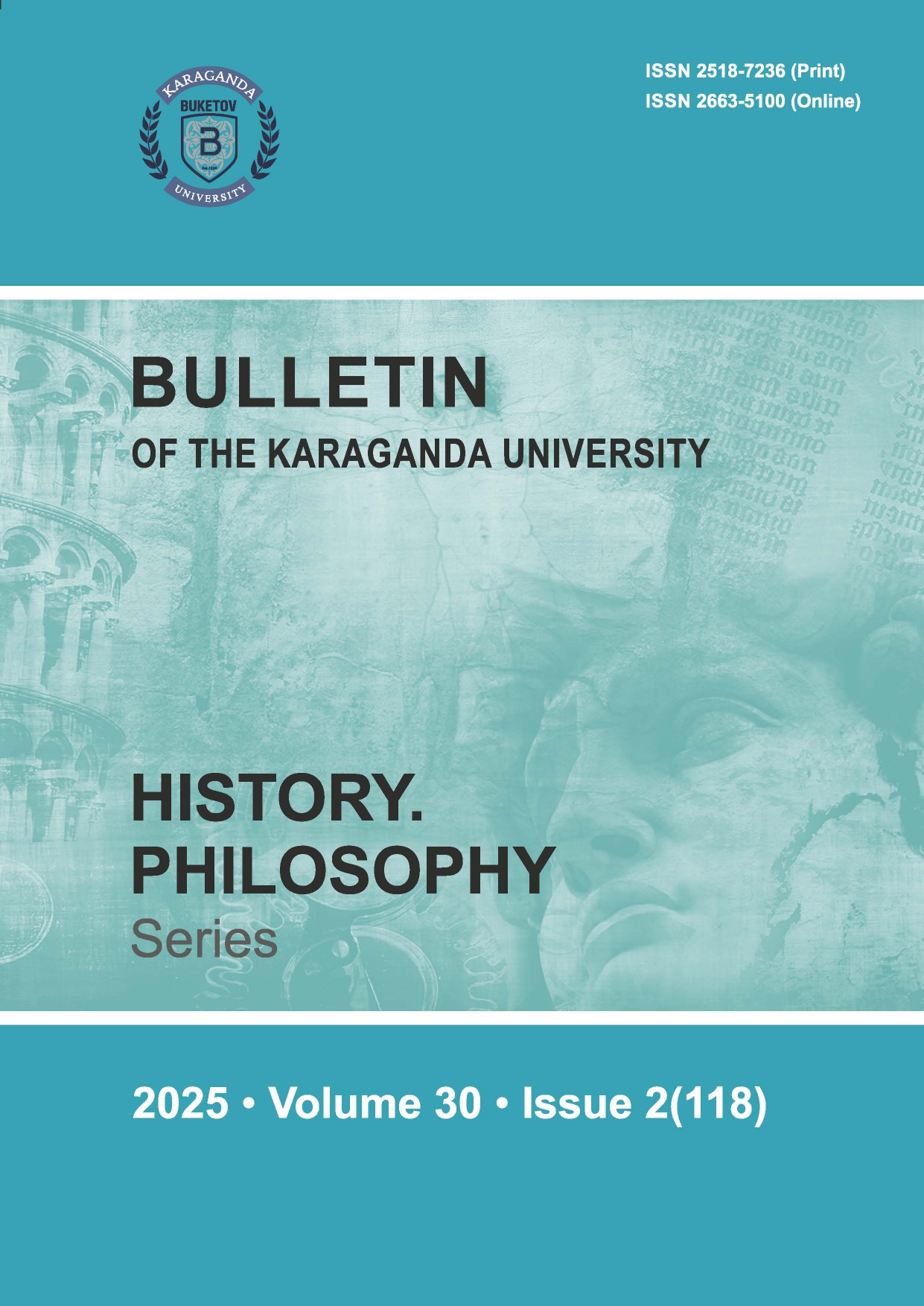The Ethnopolitical History of the Kyrgyz People in the Research of Chokan Valikhanov
DOI:
https://doi.org/10.31489/2025hph2/140-151Keywords:
Shokan Valikhanov, Abilgazy, Kyrgyz, Issyk-Kul, Dzungaria, Bukhara, Central Asia, Aksu and TurfanAbstract
The authors of the article comprehensively examined the political and ethnic issues of the Kyrgyz people in the research of Chokan Valikhanov. The scholar’s studies on the history and culture of the Kyrgyz, including “The Issyk-Kul Diaries,” “Notes on the Kyrgyz,” and “the Sketches of Dzungaria,” are deeply analyzed in the article. The analysis revealed Valikhanov’s conclusions and views on the peculiarities of the Kyrgyz people’s tribal system, ethnogenesis, ancient settlements, their locations, population size, examples of oral literature, customs, and traditions. Special attention was given to the scholar’s use of folklore like legends, epics, and
fairy tales as primary sources in the writing of the history of nomadic peoples. The authors highlighted Valikhanov’s introduction of the Manas epic into scientific discourse and highly praise his meticulous and artistic translation of the episode “The Death of Koketai Khan and His Funeral” into Russian for the first time. In his works, Valikhanov illustrated both the similarities and differences between the languages and cultures of the Kazakh and Kyrgyz peoples with specific examples. The main goal of the article is to present Valikhanov’s contributions to the study of the history and culture of the Kyrgyz people, his conclusions, and scientific novelty based on concrete source in the context of contemporary research. The authors assert the following: Based on Valikhanov’s research, the governance system of the Kyrgyz people is defined, and his views on the formation of the Kazakh and Kyrgyz peoples demonstrate the dialectical method employed in his study. He formulated a constructive theory on the tribal composition of both peoples, proving his conclusions through comparative analysis of Chinese sources, archival documents, and oral literature. The
authors identified that, alongside pastoralism, agriculture, urban life, and craftsmanship, multiple cultural and economic practices coexisted within Kyrgyz society. In comparison to sedentary societies, they emphasize that nomadic societies, such as the Kyrgyz, developed oral literature over centuries, and Valikhanov correctly highlighted the distinct historical and cultural features of the Kyrgyz people as a nomadic group for the first time.




